(Page créée avec « The amount of greenhouse gases produced by insect farming is significantly less than that of livestock. From a logistical point of view, cricket farming has many advantage... ») |
(Mise à jour pour être en accord avec la nouvelle version de la source de la page) |
||
| (31 révisions intermédiaires par 3 utilisateurs non affichées) | |||
| Ligne 1 : | Ligne 1 : | ||
| − | {{ | + | {{Tuto Details |
| − | | | + | |Main_Picture=Elevage_de_grillons_comestibles_NDM-CricketBreeding-IMG_7176_Sidonie_Frances_-_Low-tech_Lab.jpg |
| − | | | + | |Main_Picture_annotation={"version":"3.5.0","objects":[{"type":"image","version":"3.5.0","originX":"left","originY":"top","left":-3,"top":-3,"width":6000,"height":4000,"fill":"rgb(0,0,0)","stroke":null,"strokeWidth":0,"strokeDashArray":null,"strokeLineCap":"butt","strokeDashOffset":0,"strokeLineJoin":"miter","strokeMiterLimit":4,"scaleX":0.13,"scaleY":0.13,"angle":0,"flipX":false,"flipY":false,"opacity":1,"shadow":null,"visible":true,"clipTo":null,"backgroundColor":"","fillRule":"nonzero","paintFirst":"fill","globalCompositeOperation":"source-over","transformMatrix":null,"skewX":0,"skewY":0,"crossOrigin":"","cropX":0,"cropY":0,"src":"https://wiki.lowtechlab.org/images/b/bb/Elevage_de_grillons_comestibles_NDM-CricketBreeding-IMG_7176_Sidonie_Frances_-_Low-tech_Lab.jpg","filters":[]}],"height":450.51194539249144,"width":600} |
| − | |||
| − | |||
|Licences=Attribution-ShareAlike (CC BY-SA) | |Licences=Attribution-ShareAlike (CC BY-SA) | ||
|Description=Description and advantages of a farming of edible crickets | |Description=Description and advantages of a farming of edible crickets | ||
| Ligne 13 : | Ligne 11 : | ||
|Cost=20 | |Cost=20 | ||
|Currency=EUR (€) | |Currency=EUR (€) | ||
| − | |Tags=insectes, grillons, comestible, alimentation, | + | |Tags=insectes, grillons, comestible, alimentation, NomadeDesMers |
|SourceLanguage=fr | |SourceLanguage=fr | ||
|Language=en | |Language=en | ||
|IsTranslation=1 | |IsTranslation=1 | ||
}} | }} | ||
| − | {{ | + | {{Introduction |
|Introduction=Advantages of a farming of edible crickets for humans | |Introduction=Advantages of a farming of edible crickets for humans | ||
| + | <div class="mw-translate-fuzzy"> | ||
Nutrition | Nutrition | ||
| + | </div> | ||
Insects are interesting in research of new sources of proteins and offer alternatives to our traditional and non sustainable way of consumption . The cricket's energy intake is 120 kcal/ 100g ( weight when it is fresh) and its average protein content is 8-25g/100g ( weight when it is fresh). The cricket appears to be a really good source of proteins, omega 3 and 6 fatty acids, and minerals: iron, zinc, magnesium, copper,... | Insects are interesting in research of new sources of proteins and offer alternatives to our traditional and non sustainable way of consumption . The cricket's energy intake is 120 kcal/ 100g ( weight when it is fresh) and its average protein content is 8-25g/100g ( weight when it is fresh). The cricket appears to be a really good source of proteins, omega 3 and 6 fatty acids, and minerals: iron, zinc, magnesium, copper,... | ||
| + | <div class="mw-translate-fuzzy"> | ||
Ecology/ economy | Ecology/ economy | ||
| + | </div> | ||
Insect farming asks less water and feed than bovine, sheep and pig farming: their feed conversion capacity (the ability of an animal to convert a given weight of feed to body weight, represented in kg feed per kg of weight gain of the animal) is higher than those of the farming mentioned above. For example, it takes 10 kg of feed to produce 1 kg of beef while it takes 1.7 kg of feed to produce 1 kg of crickets. | Insect farming asks less water and feed than bovine, sheep and pig farming: their feed conversion capacity (the ability of an animal to convert a given weight of feed to body weight, represented in kg feed per kg of weight gain of the animal) is higher than those of the farming mentioned above. For example, it takes 10 kg of feed to produce 1 kg of beef while it takes 1.7 kg of feed to produce 1 kg of crickets. | ||
| Ligne 31 : | Ligne 33 : | ||
The amount of greenhouse gases produced by insect farming is significantly less than that of livestock. From a logistical point of view, cricket farming has many advantages over large livestock farming: the area of land occupied is smaller, possible in urban areas. The low need for investment in infrastructure can enable poorer populations to start micro-farming, they can be raised on substrates made up of agricultural waste and fed with organic by-products. | The amount of greenhouse gases produced by insect farming is significantly less than that of livestock. From a logistical point of view, cricket farming has many advantages over large livestock farming: the area of land occupied is smaller, possible in urban areas. The low need for investment in infrastructure can enable poorer populations to start micro-farming, they can be raised on substrates made up of agricultural waste and fed with organic by-products. | ||
| + | '''Please note''' : | ||
| − | |||
L'élevage qui est réalisé dans ce tutoriel est actuellement en cours de test dans le cadre de l’expédition [http://lowtechlab.org/wiki/Nomade_des_mers Nomade des Mers] | L'élevage qui est réalisé dans ce tutoriel est actuellement en cours de test dans le cadre de l’expédition [http://lowtechlab.org/wiki/Nomade_des_mers Nomade des Mers] | ||
| + | |||
| + | UN TUTORIEL VIDEO EST DISPONIBLE [https://www.brut.media/fr/science-and-technology/voila-comment-fabriquer-une-ferme-a-grillons-71319fc0-a847-49a6-9e55-c9f23408f054 ICI] ! | ||
}} | }} | ||
| − | {{ | + | {{Materials |
| − | |Material=* | + | |Material=*Waterproof box |
| − | * Cartons : type | + | * Cartons: egg tray type |
| − | * | + | *A plastic glass |
| − | * 2 | + | *2 containers (dish) |
| − | * | + | * A tray |
| − | * | + | *Fine mesh |
| − | * | + | *Coconut fibre or ground dry matter |
| − | * | + | *Food for crickets (here finely crushed wheat) |
|Tools= | |Tools= | ||
}} | }} | ||
| − | {{ | + | {{Tuto Step |
| − | + | |Step_Title=Insect-proof farming box | |
| − | + | |Step_Content=*Buy or make an insect proof farming box. In the case of making, it is possible to be inspired by this[http://lab.lowtechlab.org/index.php?title=Bassin_de_culture_de_spiruline tuto]. | |
| − | |||
| − | |Step_Title= | ||
| − | |Step_Content=* | ||
| − | ''' | + | '''Notes''': |
| − | 1) | + | 1) In our case, the farming box is 1m * 0.5m by 0.5m high. |
| − | 2) | + | 2) The box must not be airtight for oxygen to circulate. |
| + | |Step_Picture_00=Elevage_de_grillons_comestibles_IMG_0928.JPG | ||
| + | |Step_Picture_01=Elevage_de_grillons_comestibles_IMG_0929.JPG | ||
}} | }} | ||
| − | {{ | + | {{Tuto Step |
| + | |Step_Title=Interior arrangement of the farming box. | ||
| + | |Step_Content=*Place the egg cartons in the box, leaving a space between each carton. | ||
| + | *Make a drinking trough, such as a chicken trough, with a glass of plastic water in a cup lined with a wire mesh to leave a space between the cup and the glass ( there must not be too much water at the risk of drowning the crickets). | ||
| + | *Place a tray on the egg cartons large enough to hold the trough and feed for the crickets. | ||
|Step_Picture_00=Elevage_de_grillons_comestibles_IMG_0931.JPG | |Step_Picture_00=Elevage_de_grillons_comestibles_IMG_0931.JPG | ||
|Step_Picture_01=Elevage_de_grillons_comestibles_IMG_0936.JPG | |Step_Picture_01=Elevage_de_grillons_comestibles_IMG_0936.JPG | ||
| Ligne 66 : | Ligne 73 : | ||
|Step_Picture_03=Elevage_de_grillons_comestibles_IMG_0937.JPG | |Step_Picture_03=Elevage_de_grillons_comestibles_IMG_0937.JPG | ||
|Step_Picture_04=Elevage_de_grillons_comestibles_IMG_1025.JPG | |Step_Picture_04=Elevage_de_grillons_comestibles_IMG_1025.JPG | ||
| − | |||
| − | |||
| − | |||
| − | |||
}} | }} | ||
| − | {{ | + | {{Tuto Step |
| + | |Step_Title=The nest | ||
| + | |Step_Content=*In a small open box place wet coconut fibre. It will be put into service during the breeding period, the crickets will come to lay eggs inside. | ||
|Step_Picture_00=Elevage_de_grillons_comestibles_IMG_0947.JPG | |Step_Picture_00=Elevage_de_grillons_comestibles_IMG_0947.JPG | ||
| − | |||
| − | |||
}} | }} | ||
| − | {{ | + | {{Tuto Step |
| − | |Step_Title= | + | |Step_Title=How cricket farming works |
| − | |Step_Content=* | + | |Step_Content=*Get crickets of edible species, on the internet or in pet shops. Wait until the second generation before eating them if they come from a pet shop. |
| − | + | Feed the crickets with crushed wheat or any other cereal powder as well as vegetable waste (peelings, etc). | |
| − | * | + | *When the crickets start singing (45 days for the species of this tuto), they are mature and begin the breeding period: |
| − | + | Place the nest in the waterproof box, moistening the fibre slightly. | |
| − | + | Leave the nest for 3 days with the adults, the females will come to lay as long as the coconut fibre is wet. | |
| − | + | Remove adult crickets after 3 days. | |
| − | * | + | *Scald the crickets before eating. This eliminates any bacteria or parasites present in the crickets, as with conventional meat. |
| − | + | There are different ways to eat crickets, (more to come) | |
}} | }} | ||
| − | {{ | + | {{Tuto Step |
| − | |Step_Title= | + | |Step_Title=Processing / Consumption |
| − | |Step_Content=* | + | |Step_Content=*Scald the crickets before eating. This eliminates any bacteria or parasites present in the crickets, as with conventional meat. |
| − | ''' | + | '''Notes''': |
| − | 1) | + | 1) It is possible to eat them as they are. |
| − | 2) | + | 2) A drying allows a conservation of several weeks / month. |
| − | 3) | + | 3) A powder reduction, incorporated into conventional flour avoids the blocking linked to cultural codes. |
| − | 4) | + | 4) More information on farming and consumption coming soon. |
| + | }} | ||
| + | {{Notes | ||
| + | |Notes=*Experimental tutorial directed by Pierre-Alain Lévêque and Arnaud Mayaux | ||
| + | *Edible insects - future prospects for food and feed security, 2013. FAO Forestry Paper No. 171. ( FAO report)[http://www.fao.org/3/a-i3253f.pdf] | ||
| + | *Method provided by a Thai farmer during the Nomade des mers mission. | ||
}} | }} | ||
| − | {{ | + | {{PageLang |
| − | |||
| − | |||
| − | |||
}} | }} | ||
| − | {{ | + | {{Tuto Status |
|Complete=Published | |Complete=Published | ||
}} | }} | ||
| + | {{Separator}} | ||
Version actuelle datée du 26 mars 2021 à 11:34
Introduction
Advantages of a farming of edible crickets for humans
Nutrition
Insects are interesting in research of new sources of proteins and offer alternatives to our traditional and non sustainable way of consumption . The cricket's energy intake is 120 kcal/ 100g ( weight when it is fresh) and its average protein content is 8-25g/100g ( weight when it is fresh). The cricket appears to be a really good source of proteins, omega 3 and 6 fatty acids, and minerals: iron, zinc, magnesium, copper,...
Ecology/ economy
Insect farming asks less water and feed than bovine, sheep and pig farming: their feed conversion capacity (the ability of an animal to convert a given weight of feed to body weight, represented in kg feed per kg of weight gain of the animal) is higher than those of the farming mentioned above. For example, it takes 10 kg of feed to produce 1 kg of beef while it takes 1.7 kg of feed to produce 1 kg of crickets.
The amount of greenhouse gases produced by insect farming is significantly less than that of livestock. From a logistical point of view, cricket farming has many advantages over large livestock farming: the area of land occupied is smaller, possible in urban areas. The low need for investment in infrastructure can enable poorer populations to start micro-farming, they can be raised on substrates made up of agricultural waste and fed with organic by-products.
Please note :
L'élevage qui est réalisé dans ce tutoriel est actuellement en cours de test dans le cadre de l’expédition Nomade des Mers
Matériaux
- Waterproof box
- Cartons: egg tray type
- A plastic glass
- 2 containers (dish)
- A tray
- Fine mesh
- Coconut fibre or ground dry matter
- Food for crickets (here finely crushed wheat)
Outils
Étape 1 - Insect-proof farming box
- Buy or make an insect proof farming box. In the case of making, it is possible to be inspired by thistuto.
Notes:
1) In our case, the farming box is 1m * 0.5m by 0.5m high.
2) The box must not be airtight for oxygen to circulate.
Étape 2 - Interior arrangement of the farming box.
- Place the egg cartons in the box, leaving a space between each carton.
- Make a drinking trough, such as a chicken trough, with a glass of plastic water in a cup lined with a wire mesh to leave a space between the cup and the glass ( there must not be too much water at the risk of drowning the crickets).
- Place a tray on the egg cartons large enough to hold the trough and feed for the crickets.
Étape 3 - The nest
- In a small open box place wet coconut fibre. It will be put into service during the breeding period, the crickets will come to lay eggs inside.
Étape 4 - How cricket farming works
- Get crickets of edible species, on the internet or in pet shops. Wait until the second generation before eating them if they come from a pet shop.
Feed the crickets with crushed wheat or any other cereal powder as well as vegetable waste (peelings, etc).
- When the crickets start singing (45 days for the species of this tuto), they are mature and begin the breeding period:
Place the nest in the waterproof box, moistening the fibre slightly.
Leave the nest for 3 days with the adults, the females will come to lay as long as the coconut fibre is wet.
Remove adult crickets after 3 days.
- Scald the crickets before eating. This eliminates any bacteria or parasites present in the crickets, as with conventional meat.
There are different ways to eat crickets, (more to come)
Étape 5 - Processing / Consumption
- Scald the crickets before eating. This eliminates any bacteria or parasites present in the crickets, as with conventional meat.
Notes:
1) It is possible to eat them as they are.
2) A drying allows a conservation of several weeks / month.
3) A powder reduction, incorporated into conventional flour avoids the blocking linked to cultural codes.
4) More information on farming and consumption coming soon.
Notes et références
- Experimental tutorial directed by Pierre-Alain Lévêque and Arnaud Mayaux
- Edible insects - future prospects for food and feed security, 2013. FAO Forestry Paper No. 171. ( FAO report)[1]
- Method provided by a Thai farmer during the Nomade des mers mission.
Published
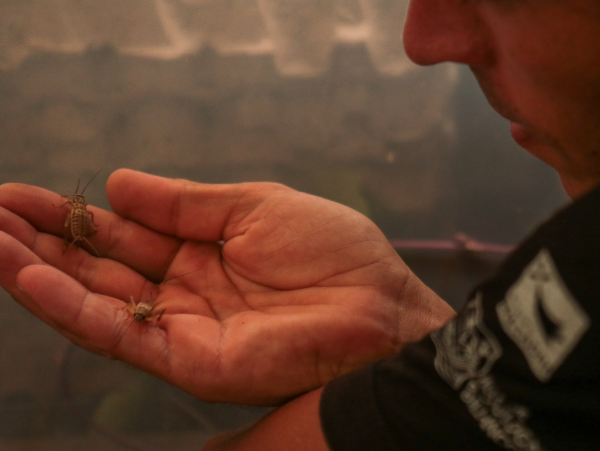
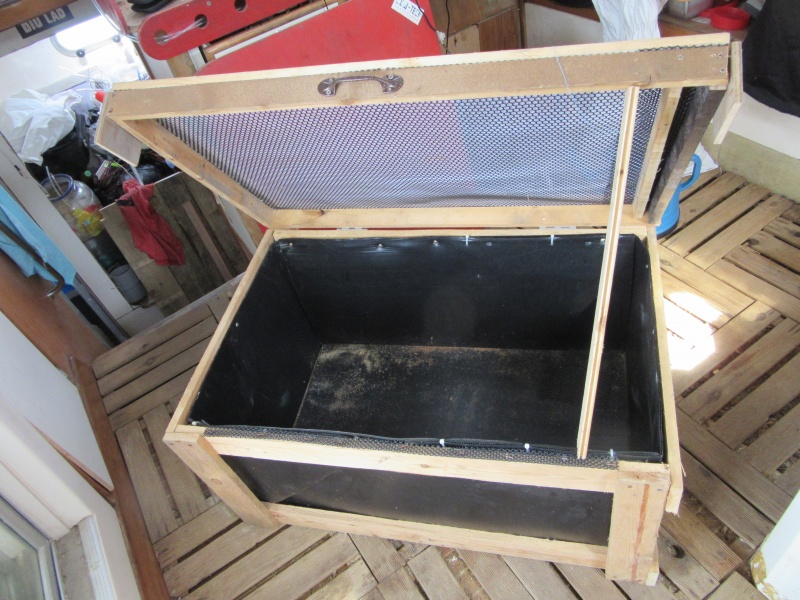
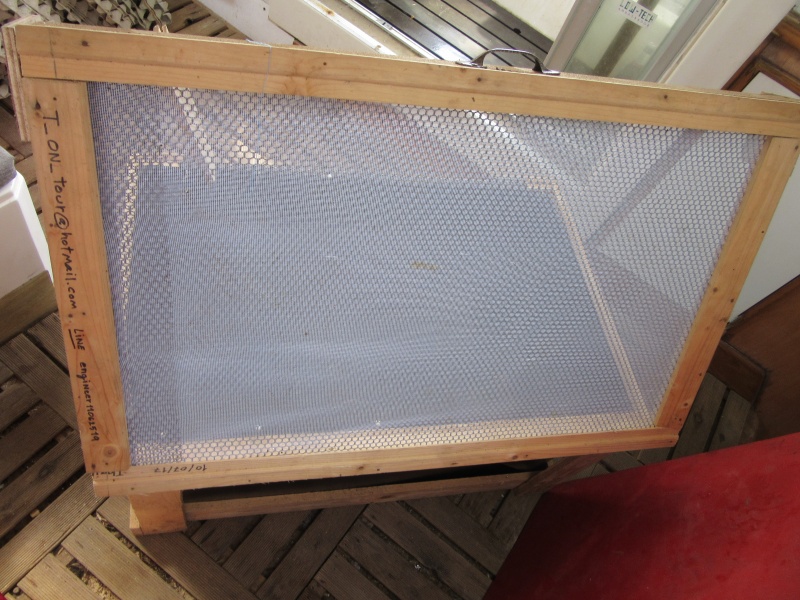
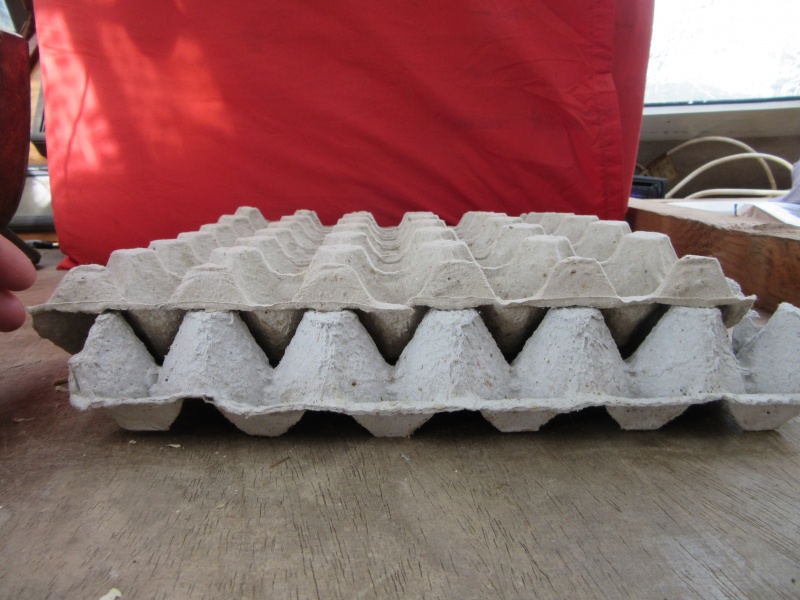
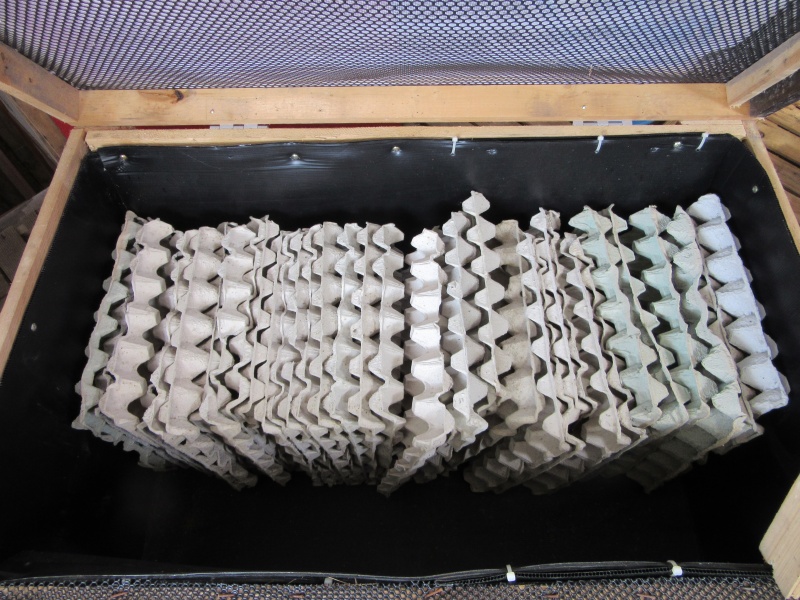
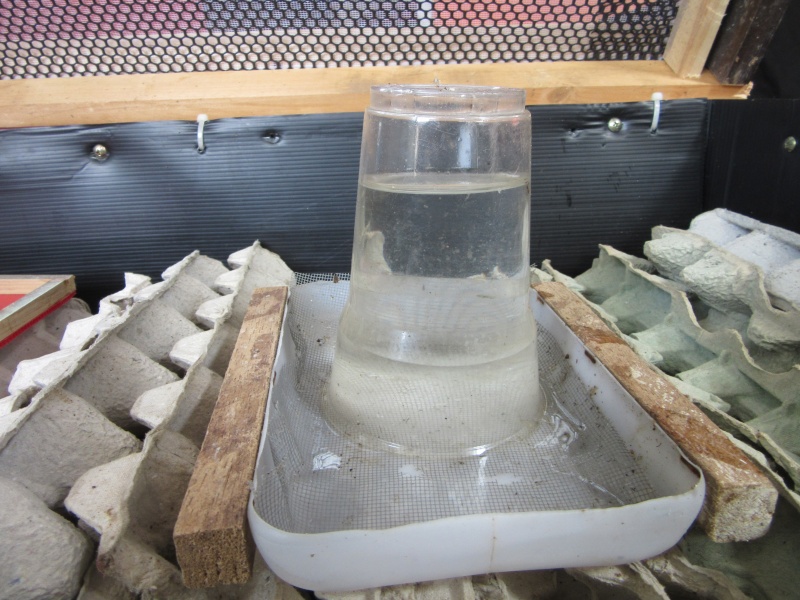
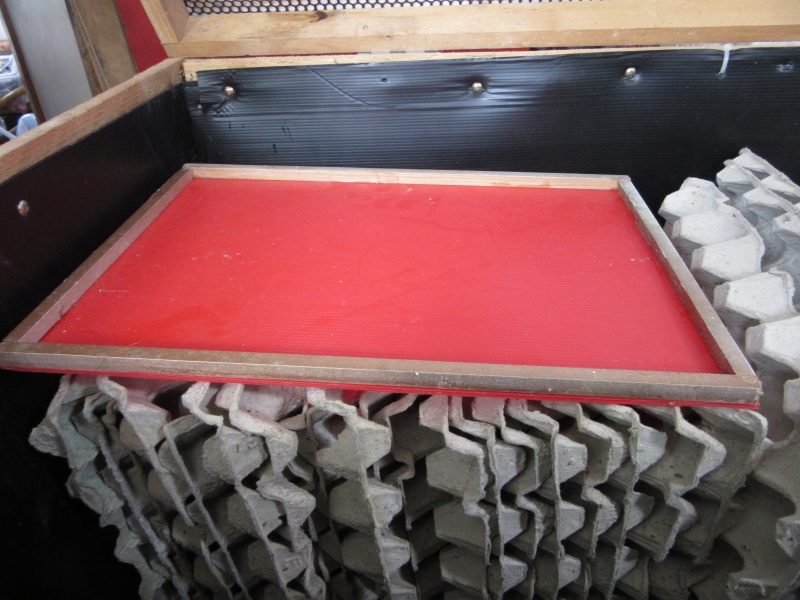
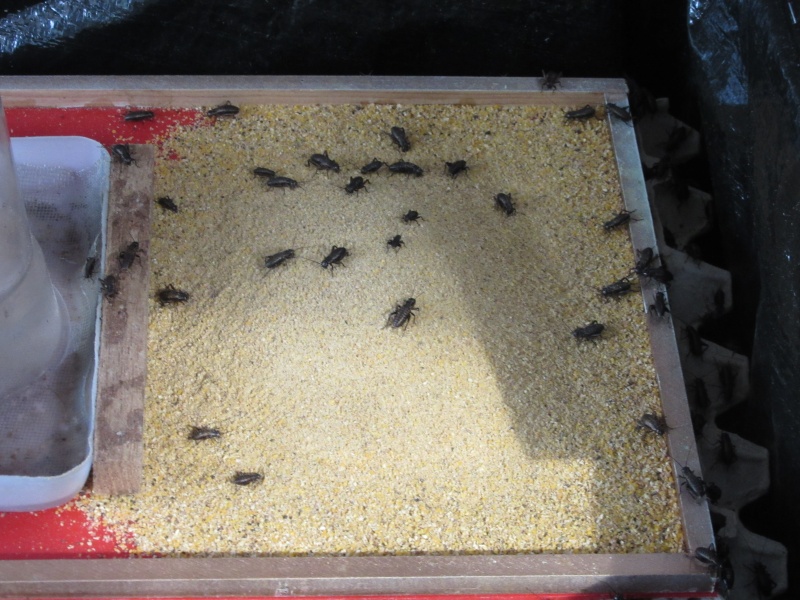
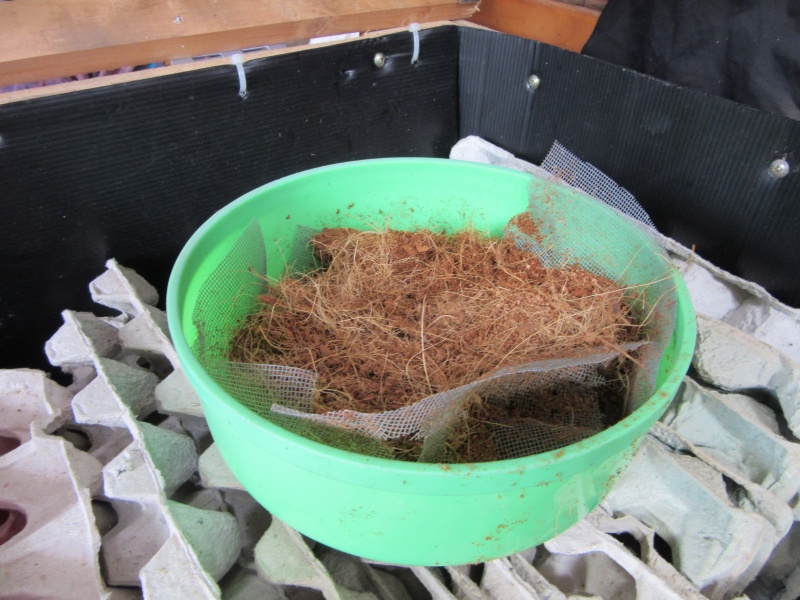
 Français
Français English
English Deutsch
Deutsch Español
Español Italiano
Italiano Português
Português